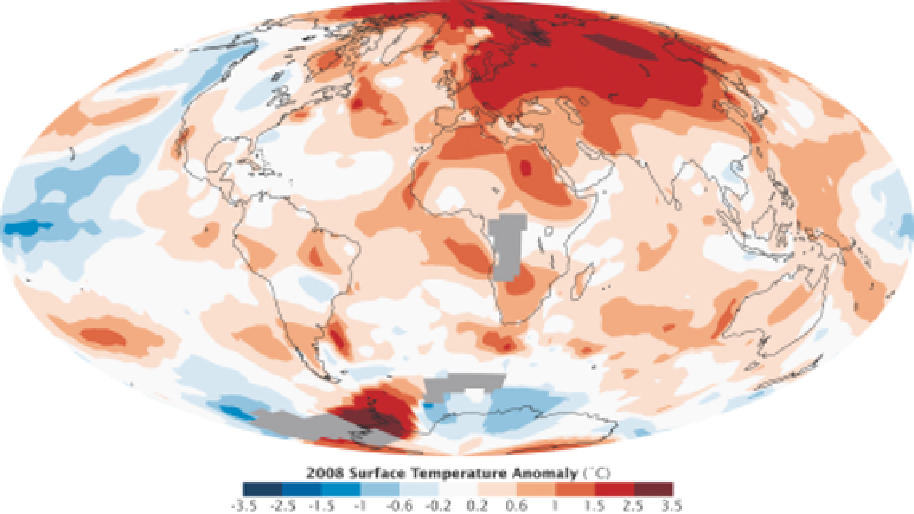Geoscience Reference
In-Depth Information
The late twentieth and early twenty-first
century has seen more frequent climatic extremes.
For example, Britain has experienced several
major droughts during this period (1976, 1984,
1989-1992 and 1995); seven severe winter cold
spells occurred between 1978 and 1987 (compared
with only three in the preceding 40 years); and
several major windstorms (1987, 1989 and 1990)
were recorded. The driest 28-month spell (1988-
1992) recorded in Britain since 1850 was followed
by the wettest 32-month interval of the twentieth
century. Europe experienced unprecedented
heatwaves in 2003 and 2008 (see
Plate 13.2
). In the
United States, recent decades saw a marked
increase in the inter-annual variability of mean
winter temperatures and total precipitation. The
year 1983 saw the most intense El Niño event for
a century, followed by a comparable event in 1998.
There is also some evidence of an increase in the
frequency of intense hurricanes (Category 4 and 5).
D UNDERSTANDING RECENT
CLIMATIC CHANGE
While the evidence is strong that much of the
global warming over the past 100 years is a
response to rising concentrations of atmospheric
greenhouse gases, we have seen that the global
temperature time series is characterized by fluctu-
ations from inter-annual to decadal and even
longer timescales (
Figure 13.7
). As just discussed,
variability is in turn very pronounced at regional
scales. Regional fluctuations and shorter term
global fluctuations may be viewed as expressions
of natural climate variability - a term which allows
for the influence of non-anthropogenic radiative
forcing. It is useful to review some of the causes
of recent climate fluctuations embedded in the
overall global warming trend, helping to set the
stage for more focused discussion of anthropo-
genic-induced change.
Plate 13.1
Global air temperatures for 2008.
Source: NASA image by Robert Simmon. http://earthobservatory.nasa.gov/IODT/view.php?id=06699.


